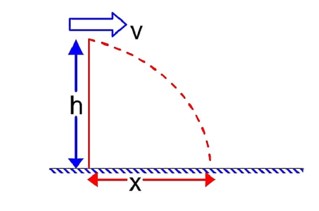Physics Motion in Plane
Get insights from 107 questions on Physics Motion in Plane, answered by students, alumni, and experts. You may also ask and answer any question you like about Physics Motion in Plane
Follow Ask QuestionQuestions
Discussions
Active Users
Followers
New answer posted
3 months agoContributor-Level 9
First angle, θ1= θ,
Another angle (θ2 = 90 - θ) for which range will be Same as that of θ1 =θ
at
So, Both statement is true & Reason is correct explanation for statement 1.
New answer posted
3 months agoContributor-Level 10
Mass and temperature are scalars. We can fully describe them by magnitude alone and do not involve direction.
New answer posted
3 months agoContributor-Level 10
Speed is a scalar quantity. It only has magnitude and no direction, unlike velocity, which is a vector.
New answer posted
3 months agoContributor-Level 10
Displacement, velocity, and acceleration are common vectors. These three vectors they have both magnitude and direction, and follow vector addition rules.
New answer posted
3 months agoContributor-Level 10
Graphically, we place vectors head-to-tail. Analytically, we add components along axes using coordinate geometry, trigonometric functions, and unit vectors for precise vector resultant calculation.
New question posted
3 months agoTaking an Exam? Selecting a College?
Get authentic answers from experts, students and alumni that you won't find anywhere else
Sign Up on ShikshaOn Shiksha, get access to
- 65k Colleges
- 1.2k Exams
- 679k Reviews
- 1800k Answers

